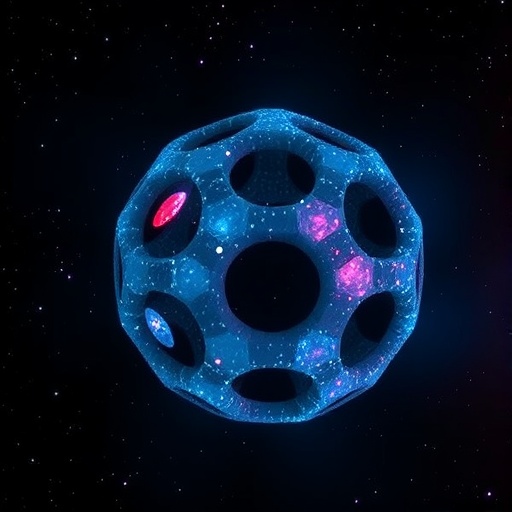NASA’s James Webb Space Telescope has made headlines by providing groundbreaking observations of the dwarf planet Makemake, an intriguing icy body situated far beyond the orbit of Neptune. A research team led by the Southwest Research Institute (SwRI) has reported the first detection of gas—a significant milestone given that Makemake is only the second known trans-Neptunian object to exhibit such a feature. Following Pluto, Makemake has now entered an elite group of celestial bodies that showcase evidence of atmospheric constituents. The gas identified is methane, a compound that not only plays a crucial role in understanding planetary atmospheres but also lends insight into the evolutionary processes occurring on distant worlds.
The findings operationalize the capabilities of the effectively robust Webb telescope, which has the remarkable ability to peer into deep space with unprecedented detail, enabling researchers to examine the chemical makeup of celestial objects more accurately. Dr. Silvia Protopapa, the lead author of a paper detailing this discovery, expressed the significance of these observations. According to her, Makemake is one of the most substantial and luminous icy bodies beyond Neptune, largely characterized by its frozen methane-rich surface. The Webb Telescope has now unveiled that methane is not only confined to Makemake’s surface; it exists in detectable quantities in the gas phase above the planet. This revelation adds a layer of complexity to our understanding of Makemake, suggesting it is not merely a relic of the early solar system but a dynamic object still undergoing various geological processes.
The spectral emission profile obtained from the Webb observations indicates solar-excited fluorescence, which represents the phenomenon whereby sunlight absorbed by methane molecules is later re-emitted at specific wavelengths. This could suggest the presence of a tenuous atmosphere in equilibrium with surface ices, reminiscent of what scientists have observed on Pluto. Alternatively, the data might imply transient activity that could arise from comet-like sublimation processes or even cryovolcanic plume events. Both interpretations align with the parameters suggested by the current data, despite the inherent noise and limited spectral resolution encountered during observations.
For astronomers, examining Makemake has long posed numerous questions. With a diameter of approximately 890 miles (1,430 kilometers)—making it two-thirds the size of Pluto—Makemake has spurred scientific debate for years. Previous interpretations based on stellar occultations hinted that it lacked a substantial atmosphere, yet did not entirely eliminate the possibility of a thin atmosphere. Diverse infrared data, including measurements obtained from the Webb, hinted at puzzling thermal anomalies, thus raising the prospect of non-uniform hot spots scattered across Makemake’s surface and the potential for outgassing activities.
In articulating the scientific impact of these observations, Dr. Ian Wong from the Space Telescope Science Institute highlighted the pressing need to ultimately understand the mechanisms driving volatile activities on celestial bodies like Makemake. By employing sophisticated spectral modeling alongside observations from the Webb telescope, the researching team aims to unravel whether the detected methane arises from a thin, bound atmosphere or from actively eruptive plume-like dynamics. This fundamental understanding will not only foster a unified interpretation of the observed phenomena, but also broaden the context for the study of similar bodies within the trans-Neptunian region.
Further contextualizing the findings, Dr. Emmanuel Lellouch from the Paris Observatory notes that if confirmed, the presence of a tenuous atmosphere around Makemake, sustained by methane sublimation, would underscore the existence of active surface-atmosphere exchanges on this distant planet. Current models suggest that the gas temperature may hover around 40 Kelvin (-233 degrees Celsius) and indicate an extraordinarily low surface pressure—around 10 picobars, which is approximately 100 billion times weaker than Earth’s atmospheric pressure, and significantly less compared to Pluto.
In addition to a placid atmospheric scenario, the research also allows room for a more dynamic interpretation. Protopapa proposes the possibility of methane being expelled in plume-like outbursts. If validated, the models suggest that methane could be ejected at rates of hundreds of kilograms per second—comparable to the vigorous water plumes observed on Enceladus, one of Saturn’s moons, yet substantially greater than the minor vapors seen on Ceres. This variability in activity highlights the diverse geological processes active in the solar system’s outer reaches, tantalizingly suggesting the potential for complex interactions between surface materials and atmospheres.
The overarching implications of this research extend beyond merely confirming the presence of methane gas. The work intricately ties Webb’s observational abilities with advanced spectral modeling, shedding light on volatile-rich surfaces in the outer solar system. Such studies hold the promise of revealing broader trends in geophysics and atmospheric dynamics applicable not only to small icy worlds but to larger planetary bodies as well. With further observations, particularly at higher spectral resolution, scientists are poised to enrich their understanding of these fascinating astronomical entities, transforming how we perceive the outer boundaries of our solar system.
As Webb continues to reveal the secrets of deep space, the implications of Makemake’s methane detection resonate well into future explorations. Enhanced observations of such celestial bodies underscore the value of the Webb telescope and similar missions in astrobiology and planetary science. Every discovery contributes to the intricate tapestry of knowledge woven about our cosmic neighborhood, beckoning humanity to further unravel the mysteries of the universe with each passing day.
Subject of Research: Makemake and its methane gas detection
Article Title: Methane on Makemake: A Breakthrough Detection Using the James Webb Space Telescope
News Publication Date: September 9, 2025
Web References: http://dx.doi.org/10.3847/1538-4357/adf4e7
References: DOI: 10.3847/2041-8213/adfe63
Image Credits: Courtesy of S. Protopapa, I. Wong/SwRI/STScI/NASA/ESA/CSA
Keywords: Makemake, James Webb Space Telescope, methane gas, dwarf planet, trans-Neptunian objects, solar system, spectroscopy, astrobiology, planetary science




